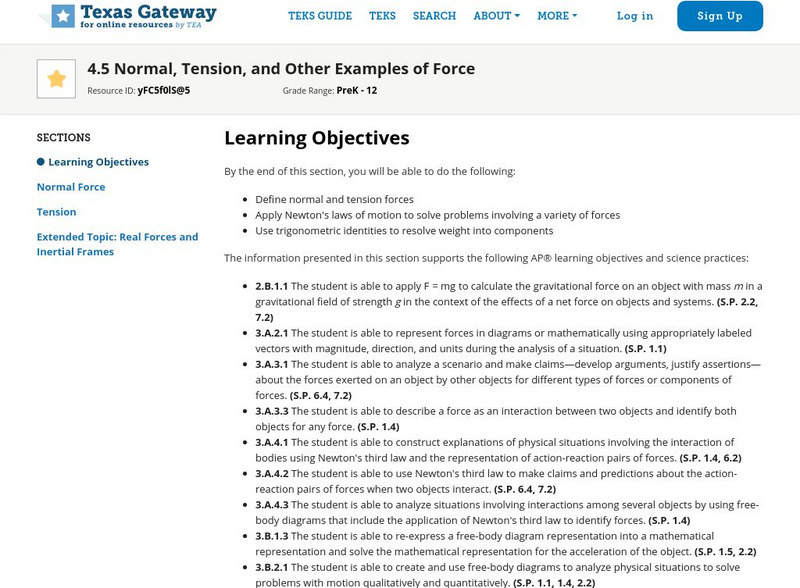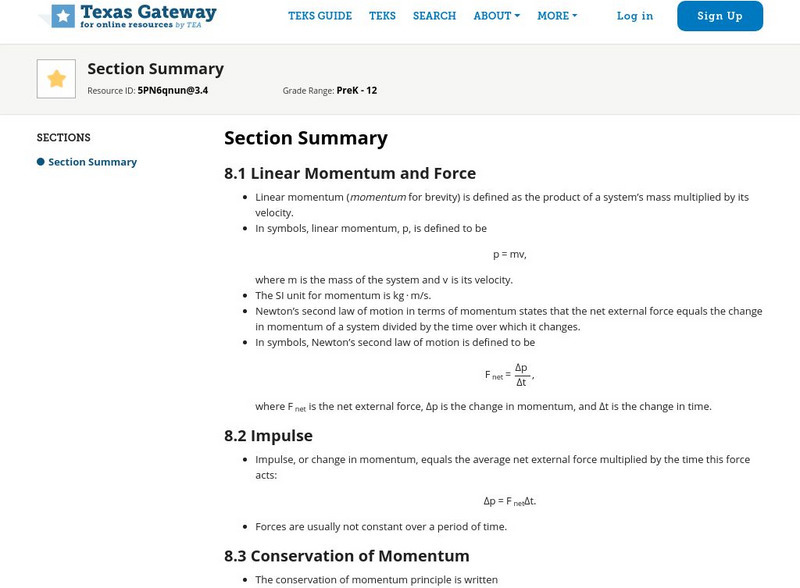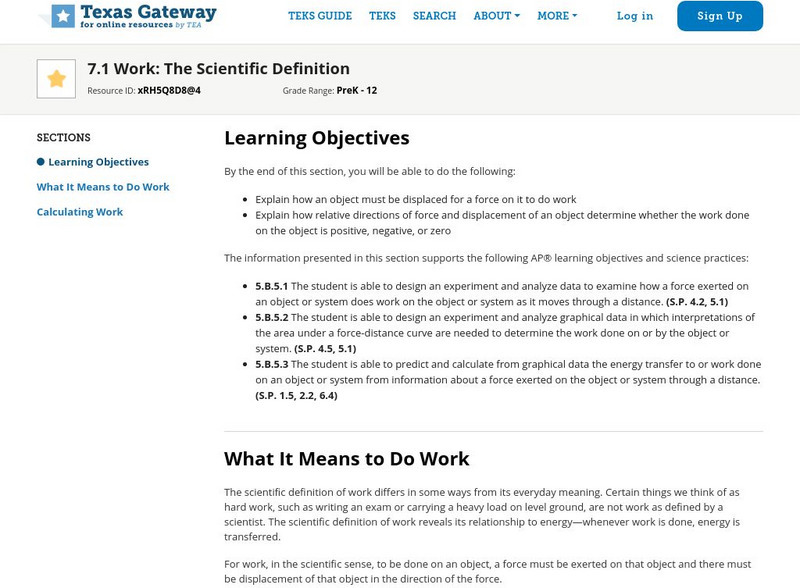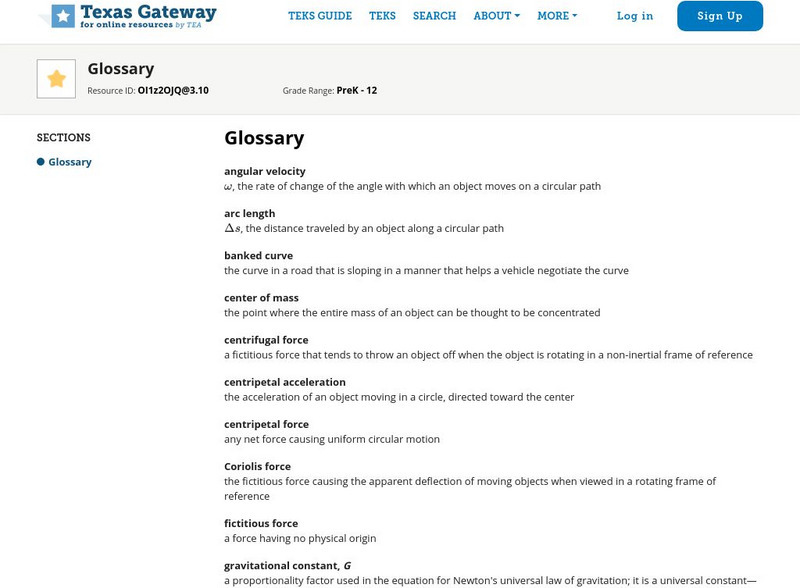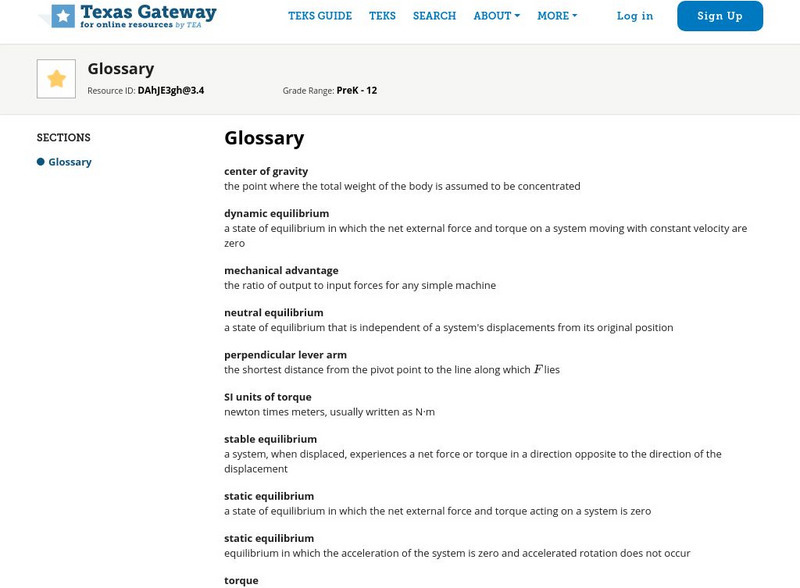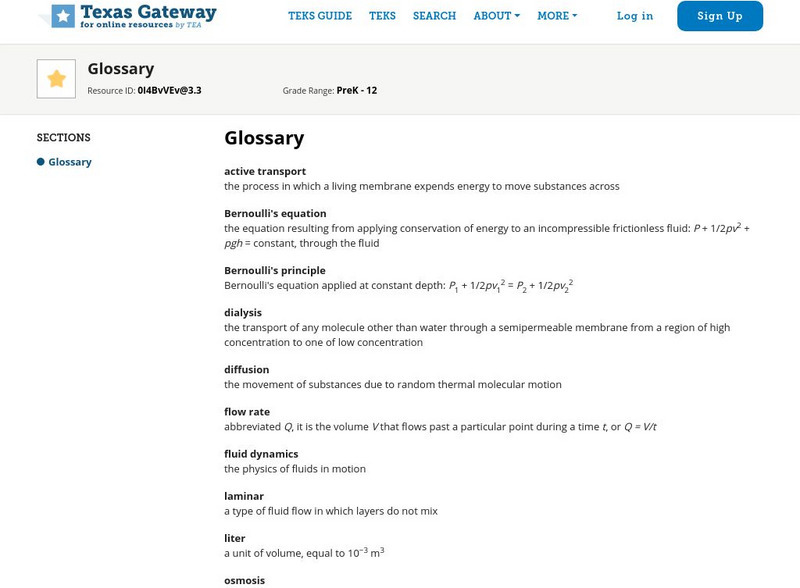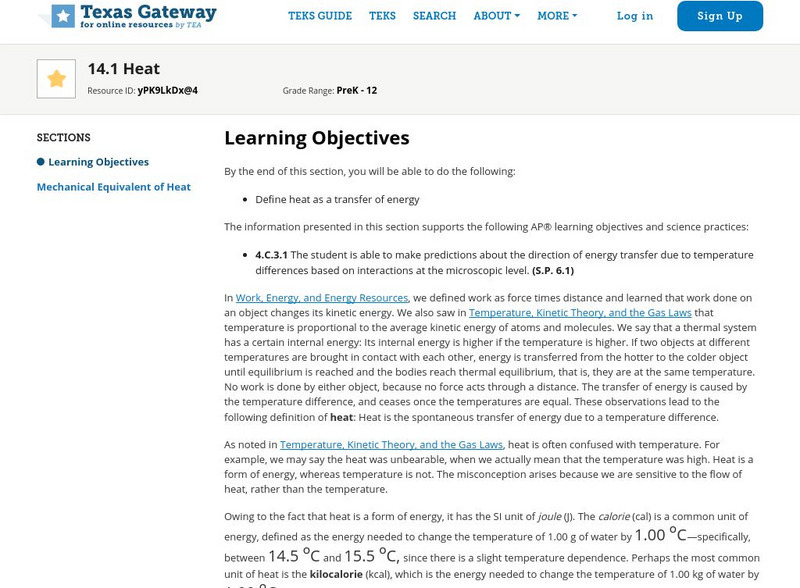Texas Education Agency
Texas Gateway: Problem Solving Strategies for Newton's Laws of Motion
By the end of this section, you will be able to apply a problem-solving procedure to solve problems using Newton's laws of motion.
Texas Education Agency
Texas Gateway: 4.5 Normal, Tension, and Other Examples of Force
By the end of this section, you will be able to define normal and tension forces, apply Newton's laws of motion to solve problems involving a variety of forces, and use trigonometric identities to resolve weight into components.
Texas Education Agency
Texas Gateway: 4.4 Newton's Third Law of Motion: Symmetry in Forces
By the end of this section, you will be able to understand Newton's third law of motion and apply Newton's third law to define systems and solve problems of motion.
Texas Education Agency
Texas Gateway: 4.2 Newton's First Law of Motion: Inertia
By the end of this section, you will be able to define mass and inertia and to understand Newton's First Law of Motion: There exists an inertial frame of reference such that a body at rest remains at rest, or, if in motion, remains in...
Texas Education Agency
Texas Gateway: 4.1 Development of Force Concept
By the end of this section, you will be able to understand the definition of force.
Texas Education Agency
Texas Gateway: 5 Newton's Laws: Friction, Drag, and Elasticity: Summary
This page summarizes each section of Chapter 5: Further Applications of Newton's Laws: Friction, Drag, and Elasticity from the AP Physics online text. These include friction, drag force, and elasticity: stress and strain.
Texas Education Agency
Texas Gateway: Glossary for Newton's Laws: Friction, Drag, and Elasticity
This is a glossary of terms and definitions used in Chapter 5: Further Applications of Newton's Laws: Friction, Drag, and Elasticity from the AP Physics online text.
Texas Education Agency
Texas Gateway: Ap Physics: The First Condition for Equilibrium
By the end of this section, you will be able to state the first condition of equilibrium, explain static equilibrium, and explain dynamic equilibrium.
Texas Education Agency
Texas Gateway: Linear Momentum and Collisions: Summary
This page features a summary of each section of Chapter 8: Linear Momentum and Collisions from the AP Physics online text.
Texas Education Agency
Texas Gateway: Kinetic Energy and the Work Energy Theorem
By the end of this section, you will be able to explain work as a transfer of energy and net work as the work done by the net force and to explain and apply the work-energy theorem.
Texas Education Agency
Texas Gateway: Work: The Scientific Definition
By the end of this section, you will be able to explain how an object must be displaced for a force on it to do work; explain how relative directions of force and displacement of an object; and determine whether the work done on the...
Texas Education Agency
Texas Gateway: Ap Physics: Uniform Circular Motion and Gravitation: Summary
This page features a summary of each section of Chapter 6: Uniform Circular Motion and Gravitation from the AP Physics online text.
Texas Education Agency
Texas Gateway: Ap Physics: Uniform Circular Motion and Gravitation: Glossary
This is a glossary of terms and definitions used in Chapter 6: Uniform Circular Motion and Gravitation from the AP Physics online text.
Texas Education Agency
Texas Gateway: Work, Energy, and Power in Humans
By the end of this section, you will be able to explain the human body's consumption of energy when at rest versus when engaged in activities that do useful work and to calculate the conversion of chemical energy in food into useful work.
Texas Education Agency
Texas Gateway: Ap Physics: Statics and Torque: Conceptual Questions
This is a list of 19 study questions covering the major concepts in Chapter 9: Statics and Torque from the AP Physics online text.
Texas Education Agency
Texas Gateway: Ap Physics: Statics and Torque: Glossary
This is a glossary of terms and definitions used in Chapter 9: Statics and Torque from the AP Physics online text.
Texas Education Agency
Texas Gateway: The Onset of Turbulence
By the end of this section, you will be to able to calculate Reynolds number and use it for a system to determine whether it is laminar or turbulent.
Texas Education Agency
Texas Gateway: Ap Physics: Fluid Statics: Summary
This page provides a summary of each section of Chapter 11: Fluid Statics from the AP Physics online text.
Texas Education Agency
Texas Gateway: Rotational Motion and Angular Momentum: Summary
This page provides a summary of each section in Chapter 10: Rotational Motion and Angular Momentum from the AP Physics online text.
Texas Education Agency
Texas Gateway: Rotational Motion and Angular Momentum: Glossary
This is the glossary of terms and definitions used in Chapter 10: Rotational Motion and Angular Momentum from the AP Physics online text.
Texas Education Agency
Texas Gateway: Fluid Dynamics and Its Biological & Medical Applications:glossary
This is a glossary of terms and definitions used in Chapter 12: Fluid Dynamics and Its Biological & Medical Applications from the AP Physics online text.
Texas Education Agency
Texas Gateway: Heat and Heat Transfer Methods: Radiation
By the end of this section, you will be able to discuss heat transfer by radiation and explain the radiant power of different materials.
Texas Education Agency
Texas Gateway: Heat Transfer Methods
By the end of this section, you will be able to discuss the different methods of heat transfer: Conduction, Convection, and Radiation.
Texas Education Agency
Texas Gateway: Heat and Heat Transfer Methods: Heat
By the end of this section, you will be able to do define heat as a transfer of energy.



